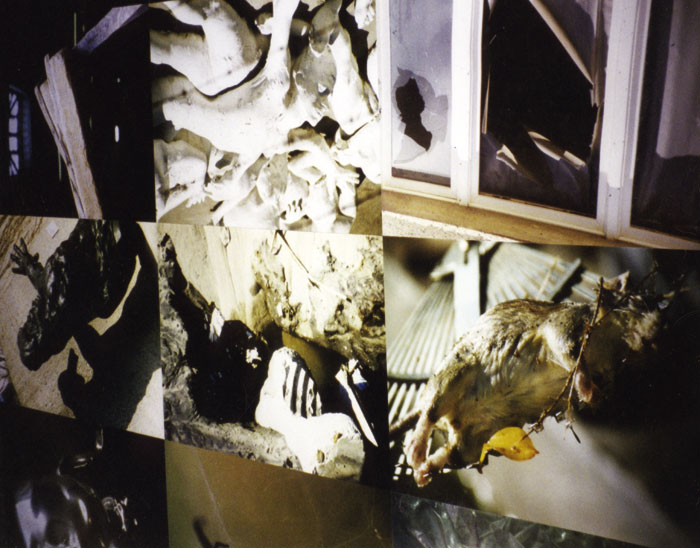Body
Transgressing the Space of the Body
Photographs showing human bodies and other bodily phenomena have been placed on the floor; they can be looked at or stepped upon. Contacts and fears of contact emerge; things can be made out to vanish again; respect prevents the beholder from stepping onto a face, which at the same time captures his curiosity and draws him into the picture space.
The ambivalence one feels does not result from the fact that one can step onto the images, but from the unusual perspective from which one encounters them. The ambivalence also arises from the diffusion of a kind of physiognomic gaze, which aligns things, which initially have no relation to each other than an undefined appearance of closeness. This fragile bridge between single images, which more or less accidentally have been fished out of a pool of phenomena, leads to reciprocal transgressions, making the visible appear and disappear and allowing for stories to encroach on their surroundings. Processes, breaks and breakpoints, as well as visual and mental sequences unravel different fragments of the pictures on view – and transform them as one follows their traces.
It is because the photographs tell unlike stories as stability and vulnerability and the abundance and beauty of things are touched simultaneously.
The images are close and specific in appearance, at the same time distant from and no more than an abstract rendition of the reality they depict. As such they lack authenticity, yet are the result of accidental, but nonetheless real occurrences. They capture how things can enter into our lives, but do not attempt to fathom or research their meaning in one way or another.
The slow amalgamation of the visual moments allows for a bodily space to emerge which reminds us of the uncertainty of the physiological.
The abstracting distance of sight does not operate to control the space of the body, but to serve that voyeurism that the exploring-wondering strolls through a city like Berlin develop: to enter open and vulnerable spaces, here – literally – right at your feet, and to engage with them in an imaginary and contemplative manner; concurrently, to understand that any offensiveness is limited to the surface, as there is much to see, but no inner functions and mechanisms revealed; in short, that they are spaces of association and identification, that exist in their own right.
Excerpts:

Catalogue: Eva Koethen “Tritt-Bilder” – Aktionen und Ausstellungen 1998-2005
(‘Step-on-Pictures’ – Performances and Exhibitions, 1998-2005)
Berlin – Tokyo 2005, 49 pages (available)
Download: “Tritt-Bilder” (‘Step-on-Pictures’) (pdf-file, 3.1 MB)





